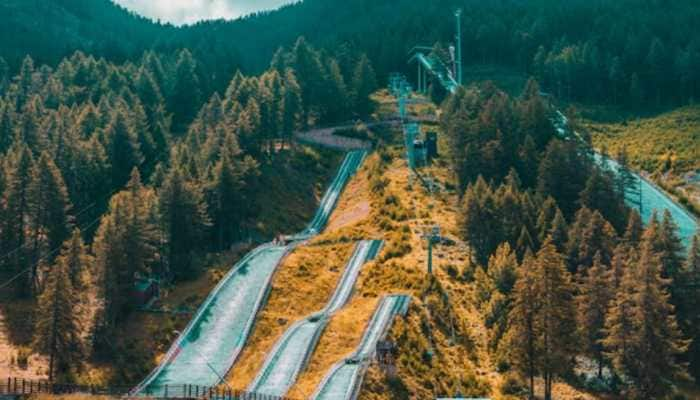With eye on China, India shifts 50,000 additional troops to border in historic move: Report
The reorientation means that India will have more troops acclimatized to fight in the high-altitude Himalayan areas, while the number of troops destined exclusively for the western border with Pakistan will see a gradual decline.
- With an eye on China, India has shifted 50,000 additional troops to the border in a historic move, says a Bloomberg report
- As of now, India has about 200,000 troops deployed on the border, representing an increase of more than 40% from last year.
Trending Photos
)
NEW DELHI: In a historic move, the Government of India (GoI) has moved nearly 50,000 additional troops to its border with China as tensions between the two nuclear-powered countries continue after clashes between the two sides in the Galwan Valley and eastern Ladakh.
A Bloomberg report said that the Narendra Modi govt at the Centre has moved troops and squadrons of fighter jets to three different areas along its border with China in the recent months. As of now, India has about 200,000 troops deployed on the border, representing an increase of more than 40% from last year.
Although India and China have fought the 1962 war, India’s strategic focus has been primarily on Pakistan and the long-time rivals have fought three wars over the disputed Kashmir region. However, in the wake of the deadliest standoff between India and China in eastern Ladakh last year, the Modi government has taken several steps to ease tensions with Islamabad and Beijing but at the same time asking the armed forces to be ready for any eventuality in the future.
While previously India’s military presence along the border was aimed at blocking the Chinese movements, the redeployment of troops is expected to give Indian armed forces more options to attack and seize territory in China if necessary in a strategy known as “offensive defense”, the report quoted a senior government official as saying.
The redeployment of troops along the China border by the government includes more helicopters to transport soldiers from the Kashmir Valley to the high altitude zones along with artillery pieces like the M777 howitzer built by BAE Systems Inc.
Though it is unclear how many troops China has deployed near the Indian border, it has emerged that the People’s Liberation Army had recently moved additional forces from Tibet to the Xinjiang Military Command, which is responsible for patrolling disputed areas along the Himalayas.
China, meanwhile, is adding new runway buildings, bomb-proof bunkers to house fighter jets and new airfields along the disputed border in Tibet, the report said. Beijing also added long-range artillery, tanks, rocket regiments and twin-engine fighters in recent months, it said.
While both Indian and China have not officially commented on the troops' redeployment, it has indeed triggered fears that a miscalculation could lead to an even deadlier conflict between the two sides.
It may be noted that the two countries have had several rounds of diplomatic and military talks toward maintaining the status quo that had prevailed along the border for decades. However, the two sides are yet to achieve a major breakthrough in military talks.
The northern region of Ladakh, where India and China clashed several times last year, has seen the largest increase in troop levels, with an estimated 20,000 troops. including those who once participated in counterterrorism operations against Pakistan now deployed in the area.
The reorientation means that India will have more troops acclimatized to fight in the high-altitude Himalayan areas, while the number of troops destined exclusively for the western border with Pakistan will see a gradual decline.
India has also gained an offensive capability along the southern Tibetan plateau near the center of the border. In that more populated area, regular soldiers equipped with machine guns have joined lightly armed paramilitary officers, the Bloomberg report said.
In the far eastern state of Arunachal Pradesh, Indian has deployed the newly acquired Rafale fighter jets from France armed with long-range missiles to support the boots on the ground, the report said.
In view of the Chinese threat, the Indian Navy has placed more warships along key shipping lanes for longer durations. The move comes after the worst clash in June that left 20 Indian soldiers and an undisclosed number of Chinese soldiers dead.
For Prime Minister Narendra Modi, the change comes as the COVID pandemic has severely affected the economy in the past four decades, leaving less money for defence. At the same time, India is intensifying security cooperation with other Quad partners (USA, Japan and Australia) to gain influence against China.
Stay informed on all the latest news, real-time breaking news updates, and follow all the important headlines in india news and world News on Zee News.
Live Tv







)
)
)
)
)
)
)
)
)
)
